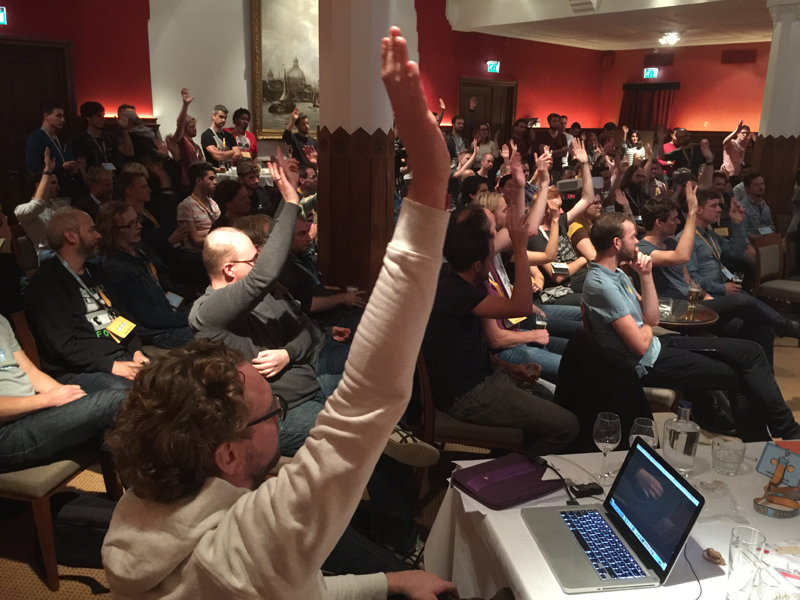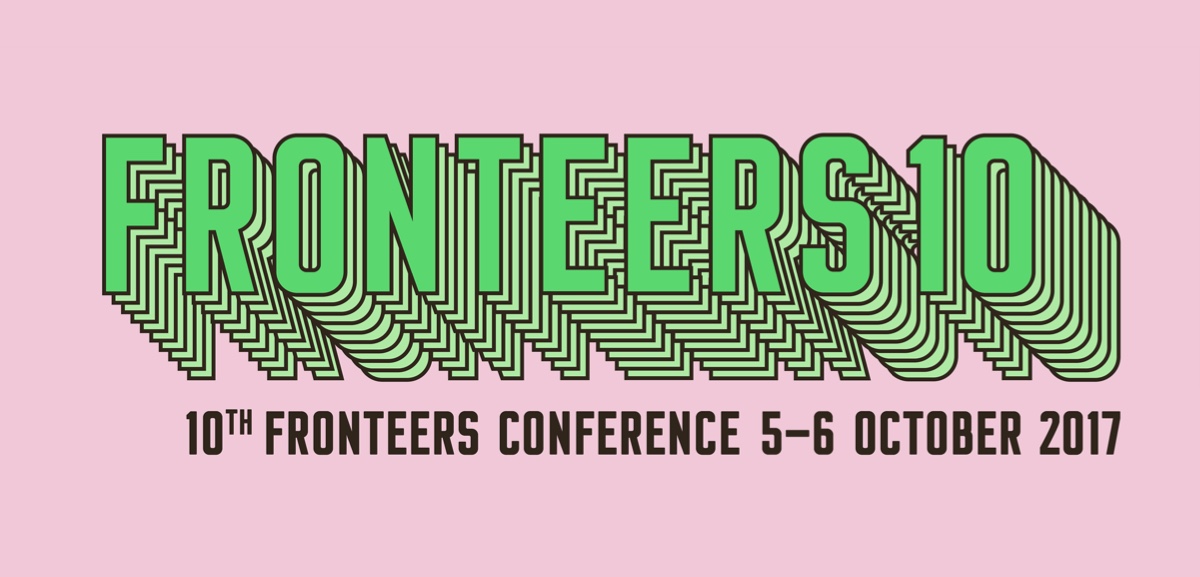Fronteers 2018 Jam Session

| What | Jam Session |
|---|---|
| When | Thursday, October 5th |
| Where | Dam 27, 1012 JS Amsterdam, see the map below |
| Venue | Koninklijke Industrieele Groote Club |
| Open | Jam Session starts at 20:30 |
| Closed | 00:30 |
| Bring | your conference badge |
The Jam Session is Fronteers Conference's annual evening of lightning talks for and from the community. Koen Willems and Job van Achterberg curate a list of 10-minute-long, rip-roaring, rabble-rousing, front-ending lightning talks.
Previous Jam Sessions were noisy, hot and steamy. This one might be too.
Talks, drinks and no music
This thursday night venue is Koninklijke Industrieele Groote Club, directly on the corner of Dam Square in the middle of the city. We're renting the entire building, so next to the Jam Session auditorium, we'll be hosting our familiar Thursday night social drinks, without background music.
See the map below for the exact location.

Our speakers this year
What not to do when presenting by Roy Tomeij
At last year's Jam Session, Roy explored how to get asked to present on the big stage. A year later, let's assume you're there and about to have 500 people pay close attention to your every word and gesture. To aid with that first impression, Roy will highlight some common pitfalls you can (learn to) avoid.
Augmented Reality for Web by Raisa Cuevas
Augmented Reality (AR) is quickly becoming more readily available to consumers and more widely recognized by companies as opportunities for innovation in marketing and product.
AR's history dates back to 1968. So why is it suddenly the next big thing?
- Devices and browsers have become more powerful and capable of handling intense computations required for AR
- Developers can easily build apps with toolkits like ARCore and ARKit
- Upcoming support on web browsers will make it available to the masses
I will describe some tools to develop AR for web, and what possibilities and limitations they come with.
Hiding content by Hidde de Vries
Most modern front-end builds contain bits of hidden content. Some have large parts of the application hidden from view. In this talk, I’ll discuss various ways of making things invisible, and explain what their impact on an application’s accessibility could be.
Holey cow! by Mathias Bynens
Something about arrays.
aXe your accessibility toolkit by Wilco Fiers
aXe is a suite of open source accessibility tools for web developers. It is built on the axe-core engine by Deque Systems, which is also open source, and unlike many other tools, it is built to be 100% accurate. There are many integrations available for axe-core, including a developer tools extension for Chrome and Firefox, a command line tool, several test tool integrations, and a React runner. We will look at how aXe can get you started on accessibility quickly with the extensions, and how you can catch accessibility issues early by building them into your continuous integration pipeline.
How (and why) to practice empathy by Marrije Schaake
You’ll be more effective as a developer and a human being when you practice empathy for others. We will look at what goes wrong when you don’t use enough empathy. And give tips on how to start training this useful human ability.
Unleash your web skills on native! by Rowdy Rabouw
Let me show you how to use your web experience to build true native apps for iOS and Android with NativeScript.
I’ll explain what NativeScript is and demo how easy it is to get started and to make use of native capabilities.
Faculty of Front-end by Jasper Moelker
I'd like to share how I am trying to turn our agency into a learning environment and am hoping to provide tips on how others can do the same.
Everyone at our office has a study budget to attend conferences and workshops, but I think that's the bare minimum you can do. To help people grow we mentor, share during weekly code talks, have a code class every other Friday about programming fundamentals, have side projects to experiment, stimulate talking and meetups by helping with topics, giving time for preparation, offering presentation training and earning extra days off.
As a format I'd like to use a few examples of how colleagues advanced thanks to these efforts.
Cool Semantic Styles by Michiel Bijl
It's about semantics.
My vanilla CSS by Vadim Makeev
Everything is so covered with sugar we can’t even unstick our hands from keyboard—it’s so convenient! When one front-end developer can’t understand the others’ code, when you’re reading an article and there’s an alien language instead of styles, it means diabetes. Purism, Luddism and a bit of a holy war.
Why JS is happily marching vanilla road with all post-ES6 features. Why CoffeeScript is eww and gross, but in CSS world we’re all Sass and Less with our hands tied with tooling. In the time of unconditional love to CSS preprocessors this talk might sound a bit radical but there always should be a room for reasonable doubt.
10 years of mistakes by Wilfred Nas
Repelsteeltje - Guess My Name by Mallory van Achterberg
We'll test the Jam Session attendees in how well they know (or can guess) interface icons (names and what they do). After all, everyone knows what the eyeball with the squiggley vertical line through it does, right?
Put yourself in the shoes of "the user" and feel the love that is web interface design.
The winner(s) receives a goat. Or a car? Oh wait, that's Monty Hall.
Quiz! by Jake Archibald

